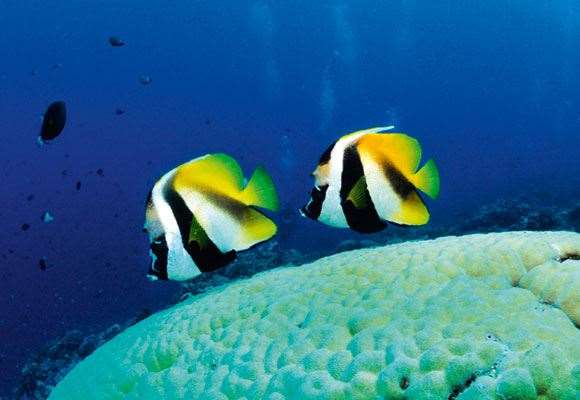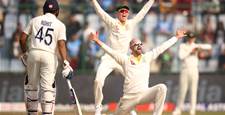Diving in Palau is like … Imagine seeing … It’s better than … It’s like nothing else you’ll see in your life.
 Fishes Images: Pacific Flyer
Fishes Images: Pacific FlyerIt’s a good thing the Palauan reefs are so well nourished because, as a novice diver, I find the task of examining them beneath a ten-metre ceiling of seawater acutely uncomfortable. I don’t like tight spaces at the best of times and I find the enclosing chamber of water unnervingly claustrophobic. It’s a state heightened by the desperate hollow rasp of my regulator and the unremitting pressure in my ears. I’m in a constant state of bewilderment. Time and again my lungs begin to ache and I realise I’m not sure whether I need to breathe in or out. My goggles fog over and my claustrophobia tightens. One moment I find the water unbearably cold, the next as warm as a bath. A mouthful of water makes its way through my lips and I have no idea how to get rid of it. I take my next breath through my nose and my mask sucks to my face with alarming ferocity. My breath becomes shallow as my heart rate rises. In all I’m doing exactly what Jonathan told me not to do. He glides alongside and gives me a questioning thumbs-up. I reply in kind, but I’m wondering if my ears will ever have the power of hearing again.
And then the reefs slide into focus and all is forgotten. At the walls that drop away into the deepwater, the coral is carved and chiselled, showing an epic cathedral austerity. I feel like a pilgrim at the Holy Sepulchre. At the saltwater lakes, ringed by sheer, jungled cliffs, reached by dark tunnels burrowed out of the limestone by the tidal erosion of the ocean, the coral shows a gentler market-garden quality; plated cabbage leaves and ripe tubers and gleaming, fruity bubblings. I have to resist the urge to snap pieces off and stuff them into my mouth.
 Kayaking in Palau
Kayaking in PalauImages: Pacific Flyer
Then there are the reefs that have grown around 60-year-old detritus from the battles fought here in WWII. The Japanese had occupied Palau since the First World War and by the time MacArthur’s marines hit the islands 30 years later they’d constructed a fasthold of pillboxes, trenches and tunnels. The Americans expected to take the Palauan island of Peleliu in a week. It eventually took three months and cost 10,000 casualties. These days the jungle has consumed the scars on the islands, but in the sea the wrecks have a ghostly, frozen quality. Jonathan takes me to an empty bay, hidden in the maze of limestone spires. It’s dark; the 50m cliffs of jungle turn the light a cold, green colour. On one side of the bay is an American Merlin, completely hidden beneath the smooth water. On the other side is a Japanese Zero, a single, bent propeller blade jutting from the water. Both are haired with brown moss. The spotted faces of fish peer from the fuselage pipes. Rub through the moss on the wings of the Zero and I can just make out the red paint of the rising sun. It’s studded with bullet holes.
There’s something ghoulish about these skeletons in the silent water. Even the fish look uneasy, skuttling about, cowering motionlessly in the hollows of the engines. After a while, I clamber back onto the boat, shame-faced, as
if I’ve been caught in a cemetery with a shovel. How long will it be before these wrecks are consumed by gleaming gardens of coral? As long as the mangroves remain and the currents flow, it shouldn’t be long.
Click on www.pacificflier.com for flights and www.fishnfins.com for dive information.
– Aaron Scott















